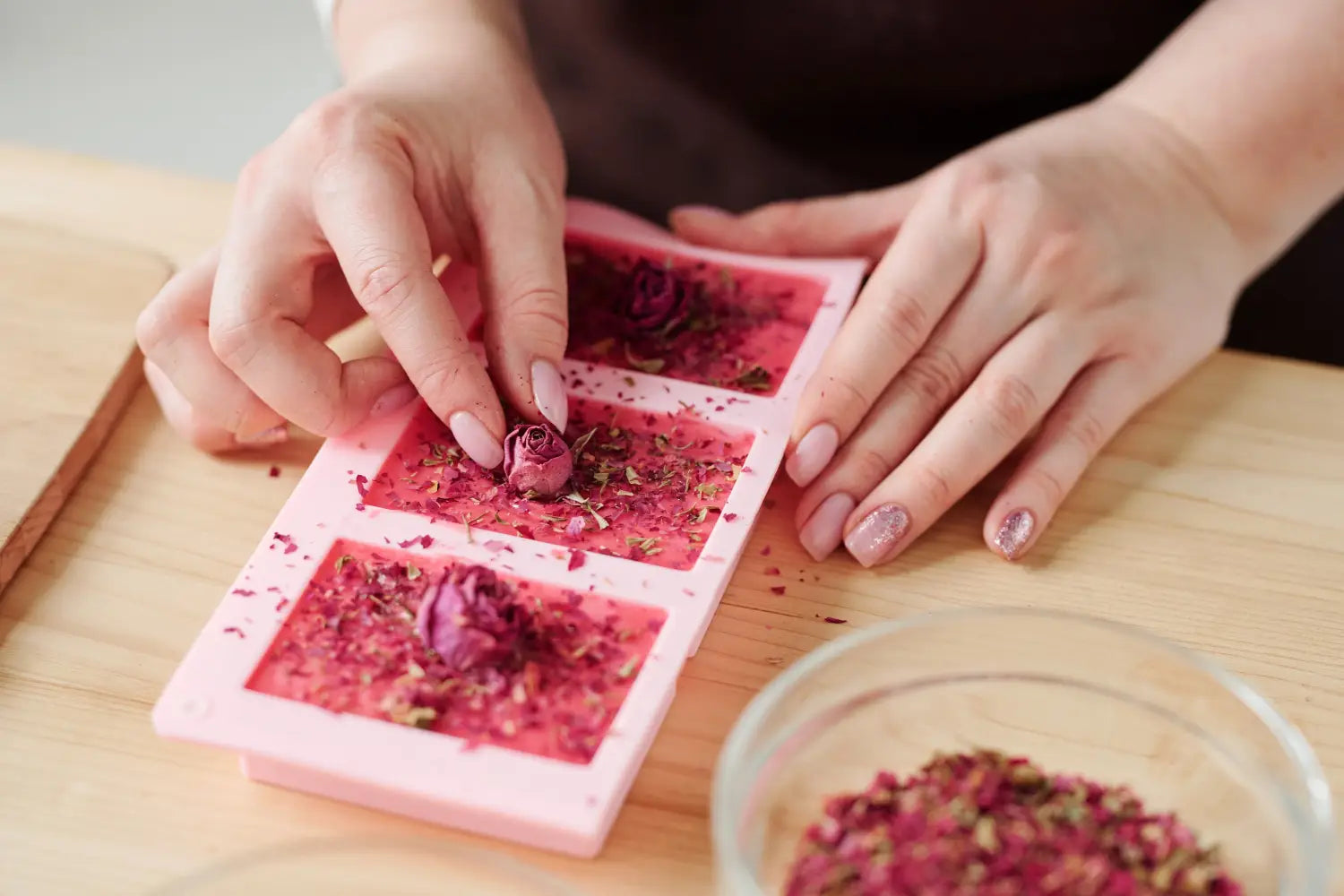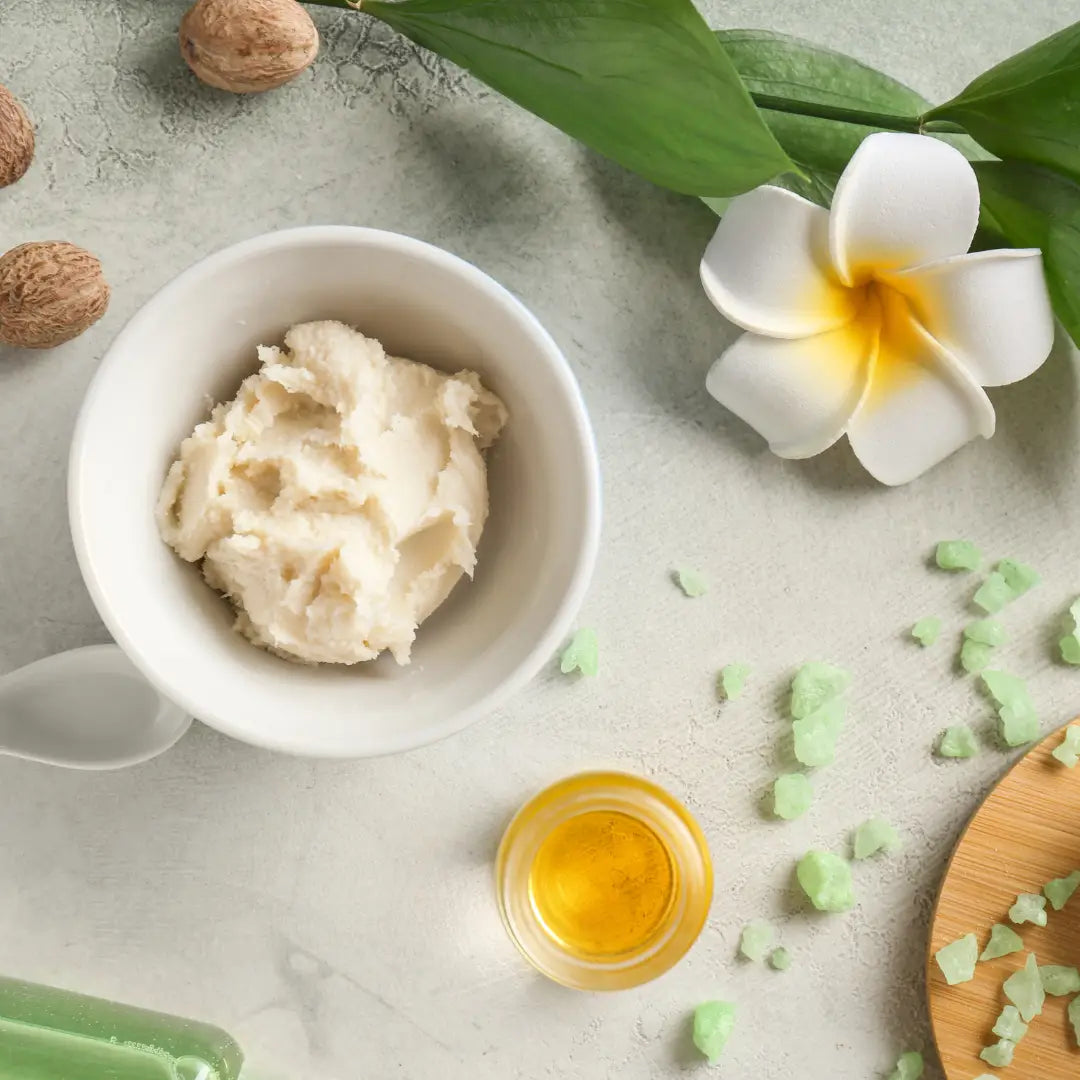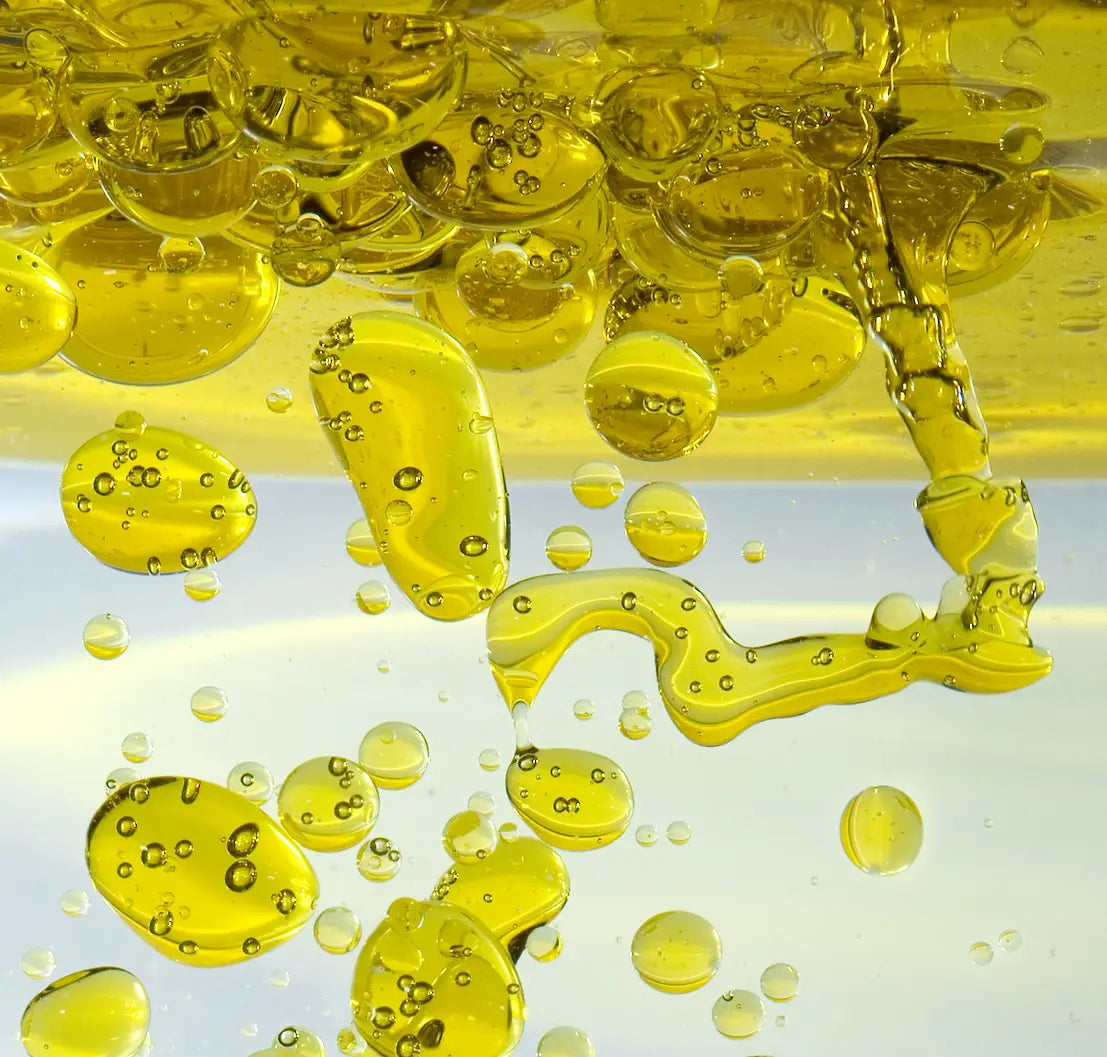Purenso Select Melt and pour soap is a great option for beginners. All you have to do is melt the premade base, customize it with your favorite colors and scents, and pour into a mold. Once you get the hang of the process, you can experiment with advanced techniques like layers and swirls.
Cold process soap is made by combining oils and sodium hydroxide lye. That causes a chemical reaction called saponification. Melt and pour soap has already gone through that process. That means you don’t have to handle lye, you can focus on the design, and you don’t have to cure the soap – it’s ready to use as soon as it’s cool and hard. It’s great for kids as well.
Soap base: There are several options to choose from when selecting a base. Crystal (Clear) and Opaque (White) Melt and Pour is a good place to start. They’re simple, cleansing, and ready to customize. The clear base will have more bright colors, while the white will have more pastel colors. You can also try bases with additives like shea butter, goat milk, or aloe vera. Find all the bases here, and learn more about them.
Fragrance: You can scent your soap with fragrance oils or essential oils. A general usage rate is about 8.5g of scent per pound of soap. Find light, medium, and strong recommendations with the Fragrance Calculator. It’s important to use skin-safe scents like the ones from Purenso. Potpourri, craft, or candle fragrances may not be skin safe or tested in soap. Be sure to check with the manufacturer before use.
Glycerin: Glycerin is a natural byproduct of the saponification process. It’s one of the reasons handmade soap feels so amazing – it draws moisture to the skin and keeps it hydrated. Additional glycerin is added during the melt and pour manufacturing process to make it easy to work with. It can also cause the soap to sweat in humid climates, so make sure to wrap your bars and keep them in a cool, dry place. Learn more in the Explaining and Preventing Glycerin Dew post.
Moulds: You need to use a mould that can withstand higher temperatures so it doesn’t melt when you pour in hot soap. You also want it to be flexible so it’s easy to unmold the bars. We love silicone molds for melt and pour, you can find those here.
Colorants: There are plenty of options for coloring melt and pour soap. Micas and color are easy to use and they look great in the finished bars.
Safety: Soap bases start to melt around 120F. Use heat-safe tools and handle with care – melted soap can hurt if dripped or splashed on skin. When crafting with children, they should be old enough to hold their own containers and an adult should be present at all times.




Comments
I want to but your melt and pour base . How to order?
Hi Team!
Recently come across your website and glad to see an India company having such an amazing variety in oils, mud, fragrances and so on. The whole idea and presentation of this website is quite good. At the very beginning, I thought this must be some International Brand but later on I get to know, its an Indore based company.
I will definitely try your products because it has already blew my mind.
Regards,
Harshita